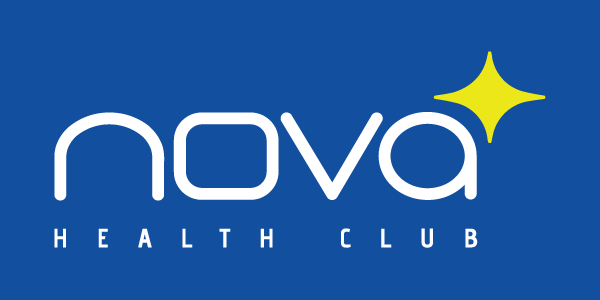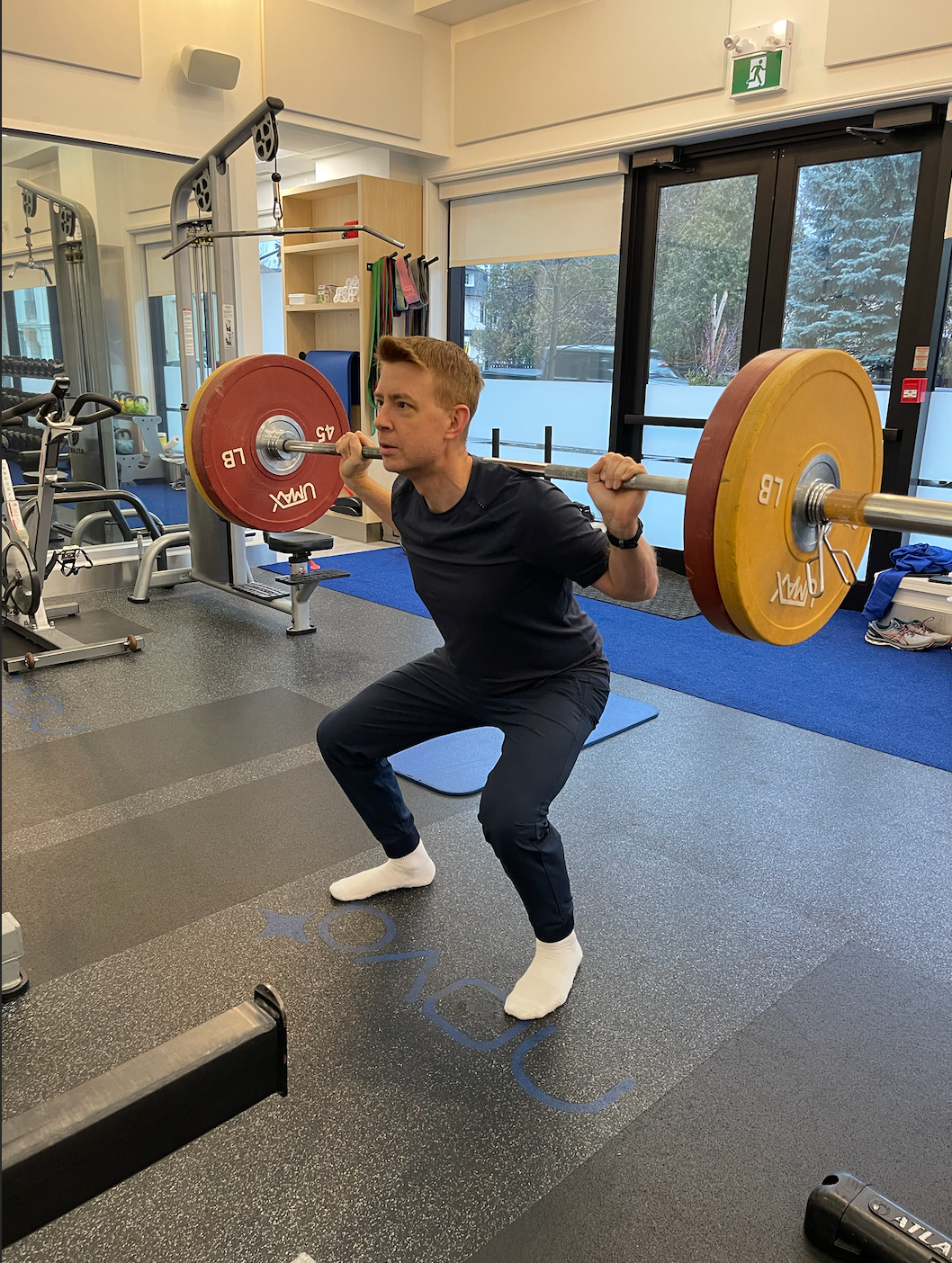
By Nova Health Club
•
28 Feb, 2024
Congratulations to Sean, our March SuperNova! Sean has trained with Nova for almost 2 years. He has made a lot of progress over his training with us but in the last 6 weeks since joining the LeanDads program he has accelerated his progress and broke through all plateaus. Here is some of the results he has experienced: Weight Loss: Sean was already a lean guy but had that extra ‘10lbs’ that has been hard to get rid of. In 6 wks he went from 186 to 175lbs. Fat Loss: With a few small lifestyle tweaks he dropped his body fat % from 15.5% to now 10.7%. To drop 4% in this time is incredible and it is the lowest it has ever been! Digestion: While fat loss was one of the goals, there was an underlying thing that has been bothering him and that was his digestion. Heartburn, relying on antacids, bloating, and other digestive issues have been a normal part of his life. However, in 6wks his digestive score went from a 4/10 to an 8/10. Running: Feeling better and carrying less weight has made running become easier and much more enjoyable. Read on to hear our interview with Sean and some specific strategies he has employed! 1)What motivated you to start your fitness journey with us 2 years ago? I had never trained or exercised in a particularly organized way – for years I did running as my primary exercise, but I had picked up various nagging injuries that were keeping me from doing it regularly and when I started at Nova I wasn’t running at all because of that. So I started at Nova to try to rehab those injuries, and to try resistance training. And it's been a great experience – I’m back to running regularly (and pain free), I move much better, and I’ve never had the general strength that I have now. 2)In the last 6 weeks, since starting our LeanDads program you have got some amazing results. What are the biggest changes you have noticed through this program? The biggest change has to be the weight loss and change in body composition – I’m amazed at the amount of body weight and body fat that I’ve lost while keeping my general muscle mass. A close second is the improvement in my digestion – I didn’t even realize how much better that could be than it was. For me this has translated into feeling and looking better, and improved athletic performance. I’m excited to continue this and see where it goes! 3)Can you share some key strategies or habits that helped you achieve this success? Any specific workouts, diets, or routines that made a significant difference? I’ve introduced a number of new habits and focused more on things like hydration, but I think the most significant impact has come from the changes I’ve made to my diet – eliminating inflammatory foods (especially gluten), eating regularly, focusing on a balance of macronutrients, and incorporating more vegetables. I’m eating more food than ever, but my body is handling it better and all that food is actually causing me to lose weight. And feeling better has helped me to stay consistent – sticking to the program and avoiding the temptation to have “cheat days”. 4)In what ways has achieving your health goals made a positive impact on your life - for example are there things that you can do now that you were not able to before? Or are there people in your life who you are now better able to serve than before? Being able to run again, and with the progress I’ve made through LeanDads to run better, has been great – I’ve always really enjoyed it, and I’m glad I’m able to do it again and to do it well. And the whole experience at Nova and with the LeanDads program has opened up new goals for me that I want to continue to pursue.
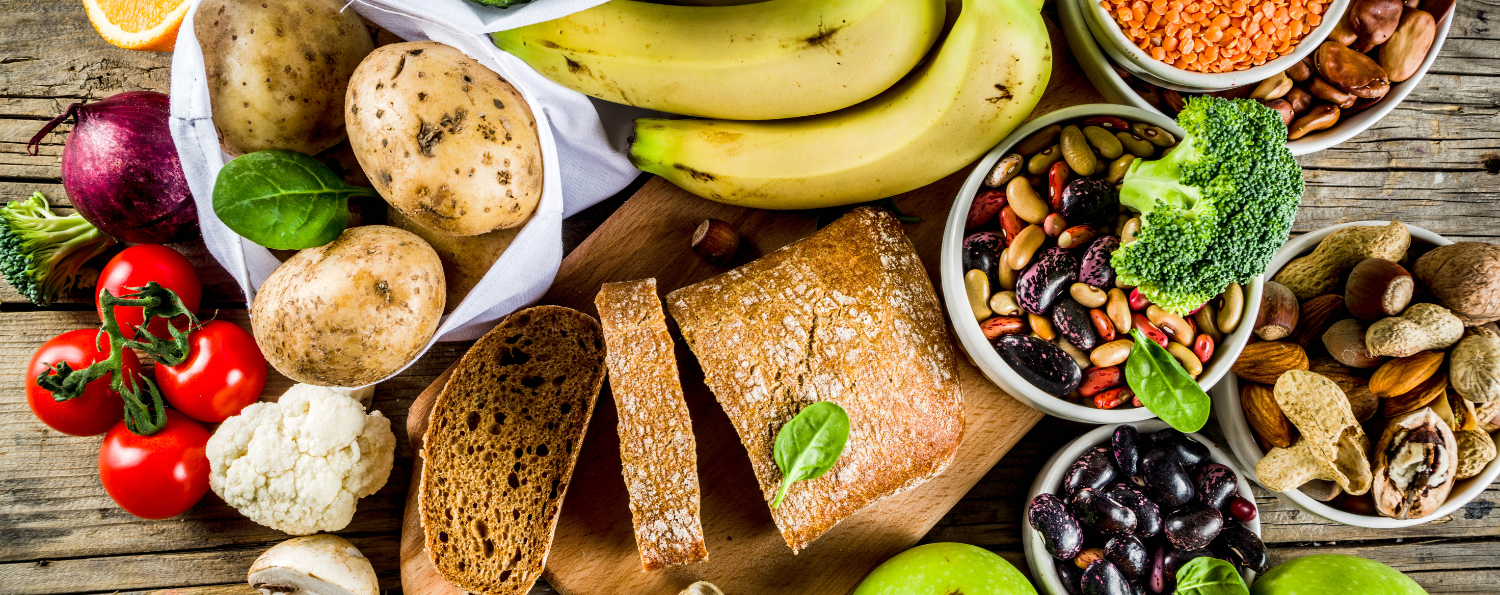
By Josh Allen
•
28 Feb, 2024
All carbohydrates when digested will raise insulin at different rates. This is called the Glycemic Index (GI) of carbohydrates. If a carb raises insulin quickly, it is considered a high glycemic carb. If it raises it gradually, it is called a low glycemic carb. For the most part, we want to stick to carbs that have a low-moderate glycemic index. There are situations when a rapid blood sugar spike can help. For example, post workout, high glycemic carbs can help shuttle nutrients into the muscles for better recovery. Very lean individuals who want to build lean muscle can benefit from having high glycemic carbs pre AND post workout. Another example would be someone who is doing an athletic event that requires them to perform for over an hour or more, high glycemic carbs after each event can aid recovery and keep them performing well. You have to consider how insulin sensitive you are (how well you handle carbs) and what is the goal you are trying to accomplish when determining what glycemic index of carbohydrates you are going to eat. The glycemic index of a carbohydrate is represented by a numerical value given to that food ranging from 1-100. High glycemic index carbs = >70 Processed grains ie: white bread/pasta White rice Sweets (cake, cookies, candy) Moderate glycemic index carbs = 56-69 Whole grains ie: whole wheat bread/pasta Basmati, parboiled rice Couscous, quinoa Low glycemic index carbs = <55 Legumes ie: beans, lentils, chickpeas etc Non-starchy vegetables ie: broccoli, spinach, tomatoes etc Fruits ie: cherries, grapefruit, apples etc Whole grains ie: barley, quinoa, oats etc Here are some examples of starchy carbs rated high to low in glycemic index:
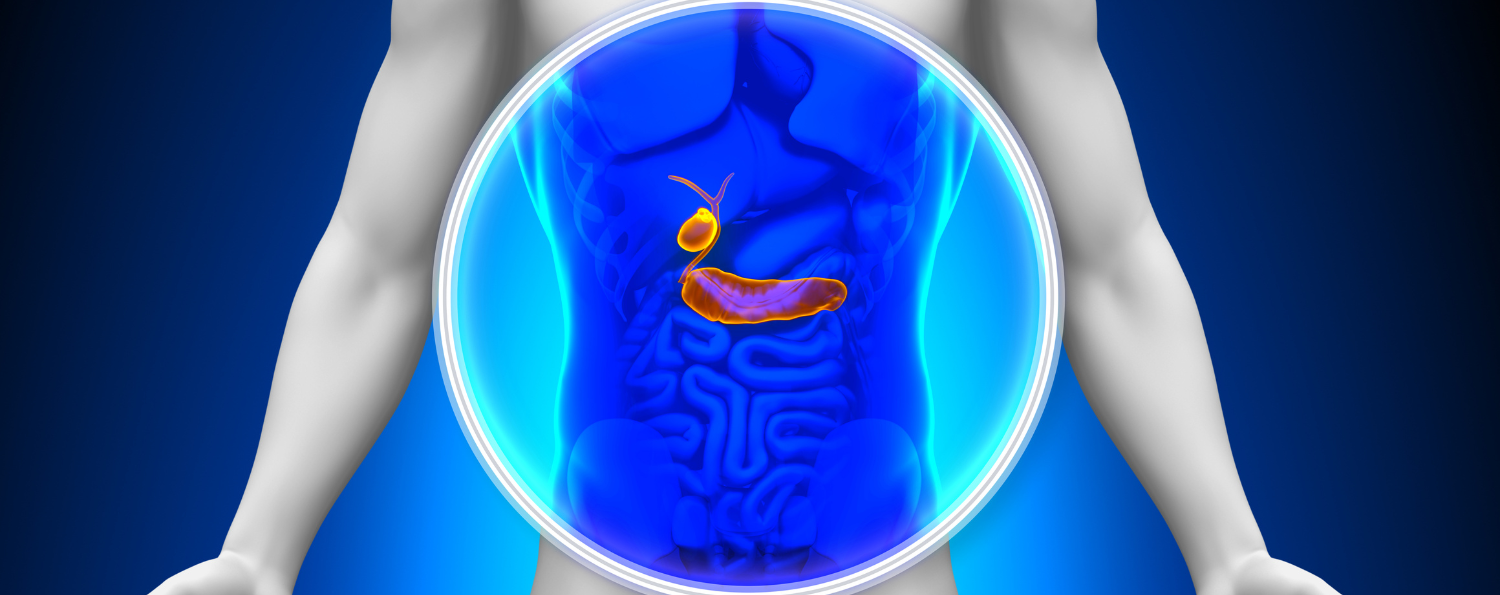
By Josh Allen
•
27 Feb, 2024
For anyone with a lot of fat to lose, insulin is an important hormone, that if controlled, could have a most impact on your weight loss. If you do not have a lot of fat to lose, understanding insulin and how it works is still a very important thing to understand for health. Did You Know That... Insulin is the most anabolic hormone, meaning it contributes to growth within the body? Insulin is the hormone that contributes to aging? What Is Insulin? The primary function of insulin is to regulate glucose (sugar) in the blood from the foods we eat. As we eat food and it breaks down into sugar, insulin acts like a shuttle, taking it to cells of the body. If all the glucose is not needed for energy, some of it is stored in fat cells and in the liver as glycogen. As sugar moves from the blood to the cells, the blood glucose level returns to a normal between-meal range. The more sugar pumping through our blood, the more insulin is needed to regulate it. A common misconception is that insulin is produced only when we eat carbohydrates, which is not true. Proteins and fats also contribute to insulin production, just not to the same degree. 8 Factors Affecting Insulin Combination of foods per meal Meal frequency and timing Digestion Stress Poor Sleep Hygiene Gut Bacteria Level of Activity and Type of Training Nutrient Deficiencies 1) Combination of Foods At Meals What you eat for breakfast, sets the hormonal/neurotransmitter trend for the day. Therefore, eating a breakfast of only carbohydrates will signal the body to elevate blood sugar (glucose) all day long (and signal more insulin). This will cause fatigue, lack of focus and more fat storage. As well, consistent consumption of processed and junk foods will cause a shortcut to insulin resistance, which we don’t want (we will discuss further). 2) Meal frequency and Timing Meal Frequency: Under-eating is one of the biggest issues seen with people. Not eating enough meals in the day is a sure fire way of disrupting insulin. Therefore, having 3 meals and 2 snacks throughout the day is generally a good meal frequency. Timing: When we eat is as important as what we eat. The only exclusion to this is high level athletes or specific cases. Most people do well eating every 3-4 hours, maximum. 3) Digestion An unhealthy digestive system doesn’t allow for the proper absorption of food. When our nutrients are not properly absorbed the body struggles to signal the proper release of insulin. Digestion includes the following: How well food is chewed, how healthy the gut is, how well the gut absorbs nutrients and how well we eliminate waste. 4) Stress When the brain perceives stress of any kind, it triggers a state of flight or fight, releasing more cortisol. We need energy when you are trying to run or fight, so your body releases more insulin. This is why most people crave carbs/sugars when they are stressed. How stressed are we on a daily basis? Quite a bit! So you can imagine how frequent these insulin spikes can happen every single day. Reminder: more insulin spikes mean more body fat. 5) Poor Sleep Getting into deeper states of sleep is closely linked to insulin sensitivity (which we want). The physical body repairs between 10pm - 2am. This includes: Organs Muscles Joints If you don’t sleep well, your pancreas (the organ that releases insulin) won’t get repaired. This results in carb cravings and possibly insulin resistance (which we don’t want) over time. 6) Gut Bacteria The balance of bacteria in your gut can affect your ability to: Digest foods Curb cravings for carbs Get good sleep quality People with dysbiosis (yeast, fungus, parasite overgrowth) usually have cortisol chronically elevated. Remember: high cortisol disrupts insulin production. 7) Level of Activity and Type of Training Regular resistance (weight) training and being active daily is key to maintaining insulin sensitivity, which is the overall goal for insulin. The body needs stimulus to effectively use the food you are feeding it. Insulin resistant people need to train: With higher volume With longer workouts More frequently 8) Nutrient Deficiencies Nutrient deficiency can disrupt insulin function and glucose metabolism. Insufficient intake of key nutrients necessary for insulin secretion and sensitivity can lead to impaired glucose homeostasis, decreased insulin secretion, and insulin resistance. These disturbances in insulin function will increase the risk of hyperglycemia, insulin resistance, and metabolic disorders such as type 2 diabetes. Key deficiencies to watch out for include: Protein Zinc Magnesium Essential fatty acids B vitamins Insulin Resistance vs Insulin Sensitivity Insulin resistance is when the body has to release more insulin to bring blood sugar levels down after consuming the same amount of carbohydrates, than if it was insulin sensitive. Example: Bowl of rice is eaten Insulin Resistant Person Releases high amount of insulin Why? To get the glucose out of the blood and into the cells that need it Because of the high amount of insulin released, glucose will be pushed into their fat cells or liver Insulin Sensitive Person Releases a low amount of insulin to do the same job of... Getting the glucose out of the blood and into the cells that need it Because of the low amount of insulin released, glucose will be driven into their muscle cells Achieving Insulin Sensitivity is the Goal! The more insulin sensitive you become the leaner you become The more insulin sensitive you are, the better you can manage carbohydrates The more insulin sensitive you are the slower you age the cells of your body (longevity) 12 Symptoms of Insulin Resistance HBA1C Greater Than 5.0 Sugar Cravings Wake Times 11-1am or 1-3am Hungry After Large meals Severe Fatigue Depression Fat in Upper Back and Love Handles Tough Skin or 'Marbling' Dark Circles Under Eyes Loss of Muscle or Hard to Gain Muscle Poor Physical Performance Reaching Muscle Fatigue Faster Final Thoughts: A balanced diet that includes adequate protein, healthy fats, and complex carbohydrates, along with portion control and avoidance of excessive sugar and refined carbohydrates, can help maintain stable blood sugar levels and insulin sensitivity. In addition to nutrition, making exercise a regular part of your life can help you become more insulin sensitive. To learn more about insulin, check out part 2 of this blog where we explore the concept of glycemic index. Curious to know if you are insulin sensitive or resistant? Email Josh@NovaHealthClub.com about our 3 step assessment to determine how you should manage insulin in your life.
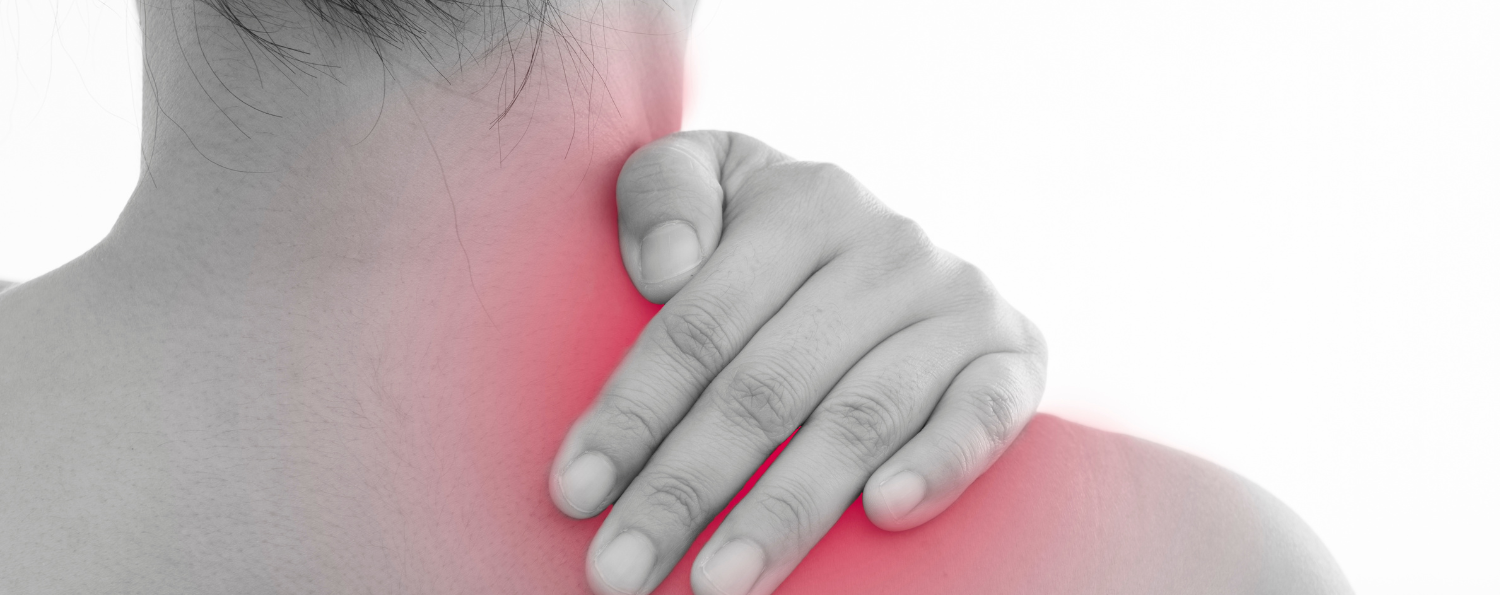
By Josh Allen
•
27 Feb, 2024
We’ve all had pain and injuries in our life and for most of us, pain is usually short lived, healing within a reasonable amount of time (depending on the injury of course). However for some, pain can become chronic either not healing at all or recurring time and time again. When I was a young personal trainer I thought I was pretty good at fixing injuries. Indeed I was good with acute injuries, I had no answers or any appreciation for chronic pain. When working with clients experiencing chronic pain, I was persistent in my belief that we simply needed to discover the appropriate physical rehabilitation approach. If we continued to flip over rocks, we would find an exercise for example that I did not know.. Or perhaps it wasn’t diagnosed properly… Or perhaps it was the client just not giving it their full attention. Even the clients did not fully understand chronic pain and trusted me with my ideas. Fast forward 20 years and I have a completely different view of chronic pain. While it can be managed very well with exercise, you have to be consistent each day with exercises and healing it completely is sometimes not possible with exercise alone. What is Chronic Pain? Chronic pain is persistent pain that lasts for an extended period, typically longer than three to six months, beyond the normal time for tissue healing. Unlike acute pain, which is a normal sensation that alerts us to possible injury or harm, chronic pain lasts over time and may not be directly related to ongoing tissue damage. Read that last part again: …”chronic pain may not be directly related to ongoing tissue damage.” And that is exactly what I was missing as a young trainer and what many coaches and clients are missing today when dealing with chronic pain - it is NOT always related to a problem with the body where the pain is being experienced. What Causes Chronic Pain? The body is just as complex as it is miraculous. Which means pinpointing the exact root of chronic pain can be very challenging. That said, some common causes of chronic pain can include the following: Underlying Medical Conditions: Arthritis, fibromyalgia, chronic fatigue syndrome, inflammatory bowel disease, and certain neurological disorders can lead to chronic pain. Injury or Trauma: Previous injuries, accidents, or surgeries can result in chronic pain, even after the initial injury has healed. Nerve Damage (Neuropathic Pain): Damage to the nerves, either from injury, disease, or conditions like diabetes or multiple sclerosis, can lead to chronic pain characterized by shooting, burning, or tingling sensations. Psychological Factors: Emotional stress, anxiety, depression, and other psychological factors can contribute to the experience of chronic pain and its impact on daily life. Lifestyle and Environmental factors: Poor posture, sedentary lifestyle, obesity, poor nutrition, smoking, inadequate sleep, exposure to toxins, pollutants, or allergens may contribute to chronic pain or exacerbate existing pain conditions. Chronic pain is often multifactorial, and addressing the underlying causes and contributing factors may require a comprehensive and multidisciplinary approach involving medical, psychological, and lifestyle interventions. Managing & Overcoming Chronic Pain If you want to manage chronic pain there are many ways to do this but if you want to get rid of chronic pain (and get your life back) you will have to start ‘flipping over rocks’ that you wouldn’t normally think of. In other words, you will have to look beyond the area of pain and usually this requires taking a closer look at a)additional diagnostic evaluations, b)lifestyle habits and or c)past emotional trauma. (Note that I said “get rid of chronic pain completely”. Some people do not believe this is possible especially with certain conditions. Personally I believe anything is possible and it all has to do with the power of your mind. You can choose to fight or submit, believe or not believe. The body is capable of amazing things when you pair it with an unbreakable mindset!) Fixing chronic pain can be like achieving a massive fat loss transformation. They both require a lifestyle overhaul. Unfortunately, this is hard (humans love easy) and does not happen for most people because the desire for change is just not strong enough. Desire for change happens when you are truly uncomfortable with your situation and are close to or have hit rock bottom. Living with chronic pain does not mean the end of everything good. You can still have a high quality of life as long as you manage it properly. Pain Management Strategies: 1. Physical Therapy & Exercise: Physical therapists, chiropractors, massage, acupuncturists etc can all help with managing pain. Finding specific exercises that work best for you are essential to learn so that you can practice them daily (and not need daily visits to professionals). 2. Medications: Specific prescriptions, over-the-counter pain relievers, muscle relaxants, alcohol and cannabis are often used to help manage pain and can improve quality of life. There is a downside here in that they are not always healthy for us. For example, painkillers like Advil will damage your gut at the same time. 3. Mind Body & Relaxation Techniques Mindfulness meditation, deep breathing exercises, biofeedback, yoga, tai chi, or hydrotherapy can help you manage chronic pain and improve overall well-being. 4. Improved Nutrition: A healthy and balanced diet rich in fruits, vegetables, whole grains, lean proteins, and healthy fats to support overall health and well-being is a must with any injury. Avoid or limit alcohol, caffeine, and processed foods, which may exacerbate inflammation and pain. Overcoming Chronic Pain: Healing chronic pain can be complex and may require a multifaceted approach that involves most of the above pain management techniques. In addition to this it requires you to think differently and be open to new ways of understanding how your body works - essentially you have to become the CEO of your health and take ownership over healing. 1.Cultivate a Winning Mindset: It all begins here. If you think you are broken you will remain broken. Be very aware of the thoughts that you allow in your head. If you believe you will heal you will heal! On that note, healing can take time and you need to be consistent. It will be challenging at times but success is inevitable for those who do not give up. 2.Understand How Stress Works: Our body is designed to heal because it always wants to get back to homeostasis (the state of physiological balance). Stress takes our body out of equilibrium. An injury or pain is both a stressor and a result of stressors. What stressors are there in your life? Lack of sleep? Too busy to relax or eat? Dehydration? Toxins? Too much exercise? Emotional trauma? Work overload? Emotional distress from past events. Peeling back the layers of your life to find the root cause of chronic pain is not easy and requires you to take a serious look at the stressors you expose yourself to in your lifestyle or that you have not resolved. This is where people give up as it means changing the very things that you may enjoy: Late nights with wine and popcorn Exercising harder or more than you should Working 10+ hours a day Accomplishing your to do list (but sacrificing rest and food) Eating pizza and wings etc The very things we need to change are the habits that drive our life. And though these habits may have served you at some point in your life, perhaps even helping you to achieve success, you have to ask yourself if they are still serving you. You will also have to clarify with yourself what you value more - living pain free or subscribing to your ‘default mode’ of doing things. Final Thoughts Whether you are managing chronic pain or on a quest to heal completely, seek support from friends, family and health professionals and stay informed. Because chronic pain can be so mysterious (especially after medical evaluations that show nothing) it is paramount to educate yourself about your condition, treatment options, and self-care strategies. Advocate for yourself by asking questions, seeking second opinions, and actively participating in your healing protocol. Healing chronic pain often takes time, patience, and persistence. Be kind to yourself, celebrate small victories, and stay committed to your treatment plan even if progress is gradual. Stay positive and focused on the steps you can take to improve your quality of life and well-being. Remember that success is inevitable with the right mindset and when you don’t give up. If you would like to examine your lifestyle for stressors that could be leading to chronic issues whether it be pain, abnormal sleep or fat gain, email Josh@NovaHealthClub.com to book your 3 step assessment with us. We evaluate digestion, metabolism, stress, sleep and nutrition to see why you are stuck and how to break through.
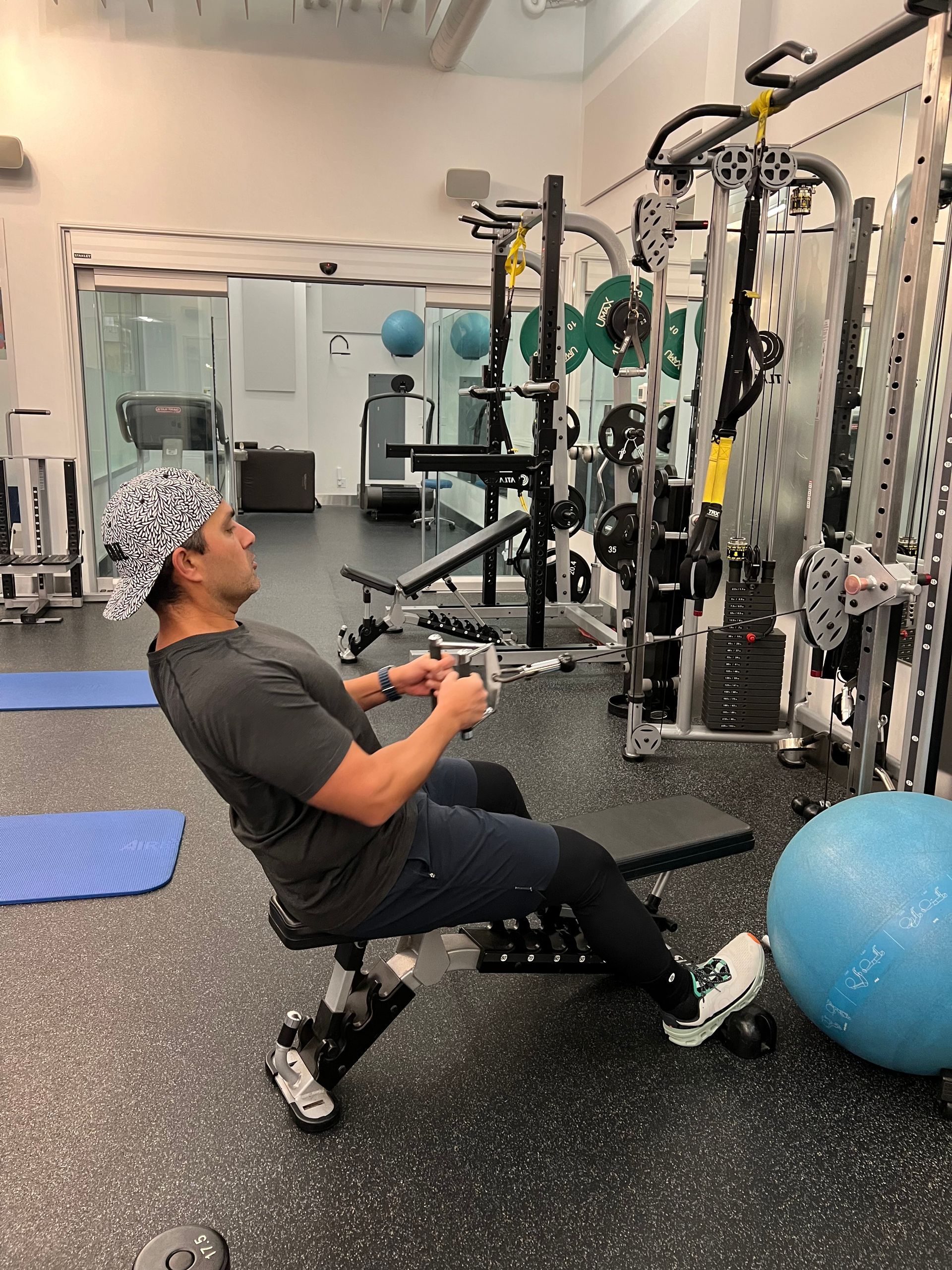
By Nova Health Club
•
01 Feb, 2024
Congratulations to Francesco, our February SuperNova! After the winter holidays, Francesco set new goals and targets for himself to achieve in 2024! Since then, he has focused on getting daily purposeful activity in and eating healthy balanced meals. He has lost 8lbs overall, dropped 3.1% body fat and still managed to gain some muscle mass! Even more, he has rehabbed his shoulder and is now pain free and able to enjoy more activities! Great job Francesco, we are pumped to see you maintain this momentum! Read on to hear our interview with Francesco and how he has attained his goals. 1)You’ve hit 2024 running with great stride - what made this year different from past years? I turned 48 this year and I knew it was time to take my health and wellness more seriously, so I set goals, wrote them down, and revisited them once a week. I also had my family set their fitness goals and share them so we could hold each other accountable and support one another throughout our journeys. I also have started using InBody once a week which keeps me on track with my progress. 2)What key strategies or habits can you owe some of your new results to? Any specific workouts, diets, or routines that you feel are making a significant difference? I have implemented food Tracking to keeping calories, fat, protein and carbs in check to achieve 2lb/week weight loss. Since back from the holidays, I have had 18 straight days of 2 training sessions at Nova, 2x one-hour cardio sessions on treadmill and elliptical and 3x 30-minute sessions on stationary bike. I have also prioritized getting 7-8 hours of sleep, drinking warm water and lemon first thing in the morning, cutting back on alcohol, no refined sugars, processed foods. I also have been avoiding snacking after dinner and drinking minimum 3 litres of water a day. 3)How do you see these positive changes impact your life beyond these results? For example, what will it help you do that you can’t do now? Who in your life will this have a positive impact on? Overall the results have been very positive. My energy levels are higher, I have a better ability to complete tasks, and my clothes fitting better! I’ve also noticed a huge improvement in family life.

By Nova Health Club
•
31 Jan, 2024
Antonia is an energetic and charismatic Health & Exercise Practitioner, CHEK Holistic Life Coach L1 and also has a diploma in Fitness and Health Promotion. She has lived and breathed fitness since her dad got her on skis at the age of two. You can catch Antonia living by her motto MEDD; Move, Every, Damn, Day. Whether she's lifting weights in the gym, hiking, spinning, boxing, doing yoga, running, snowboarding, dancing, or walking her labradoodle. Movement is her medicine and she encourages all her clients to fall in love with it, for physical and mental benefits alike. As a Holistic Life Coach, she also understands that your health is more than simply exercising, and is critically impacted by your nutrition, sleep, and happiness. Combine these aspects with MEDD and you can achieve your higher self! Welcome to the Nova Team Antonia!

By Josh Allen
•
31 Jan, 2024
The Evolution of Transformation Coaching I’ve never been more excited about a program I created than I am about this one! We are about a month into the LeanDads program and it is going great! We have 12 participants from all walks of life, from Vancouver to Halifax but with one thing in common - the desire to be the healthiest version of themselves! If you are curious about this program then continue reading below for an inside look on how it works. There are 5 pillars to men's health that we are exploring in this foundational program. Each pillar has lessons and habits associated with them. After all, learning is seeing/hearing AND doing. Mindset & Motivation Nutrition & Digestion Movement & Activity Stress & Nervous System Sleep, Rest & Recovery The entire program is based on smart versus hard work. The mission is to create sustainable transformations that will last long after each person completes the program. Developing new habits and upgrading yourself can be a challenge but with the 4 C’s we make it easy to learn and implement new (better) ways of doing things. Coaching Each day there is a coaching call. It’s not necessary to attend each one, but they are offered daily so that anyone with a problem or question can get support when they need it. And if you miss a call, all good - it’s recorded and posted in the community group each day.

By Josh Allen
•
29 Jan, 2024
The Secret to Your Success is Your Brain. The brain is like a muscle, that when trained can be reshaped, creating new neural networks that can change how we think and act, If you want to change your health, you need to change your habits. This means doing new things over and over. You have two ways to do this. The common approach is to practice extreme willpower and discipline that pushes you to do the things that are unnatural or that you don't want to do. The better way which we will uncover in this program is by reshaping how you think about your goals and the habits needed to accomplish them. Your brain controls everything you do and it has been shaped over many years through your experiences and beliefs. Your current way of thinking and doing things is your default mode. This default mode has likely served you well in life to get you to where you are but is it serving you to become the healthiest version of yourself? Transitioning Away From Default Mode To become healthy so that we can reach our goals we want to shift from the 'default mode' of doing things (our old self) to a new way that serves both who we are and who we wish to be. This new way of doing things is your 'future mode' and represents the highest version of yourself. Becoming version 2.0 of yourself means rewiring how you think about health, essentially making it easier to adopt the skills, traits and beliefs of the very person you want to become. To rewire our brain requires repetition. Beside doing the habits over an over which we already know, we must keep reminding ourselves of our higher vision and that means CONSTANTLY reconnecting with the WHY behind our goals. The Power Behind Your Habits is Your WHY! We all have goals, but something bigger exists behind those goals that is an incredible source of power. It's probably a burning desire to live life more fully. Keeping up with your kids, breaking your personal record, feeling optimistic about the future for the first time in years, or something equally desirable. Whatever it is for you, it is your WHY. Take a moment to ponder your WHY and write it down. There might be several. Here is how to extract your WHY: From your goals, ask WHY these goals are important? What will accomplishing these goals allow you to do that you can not right now? Who in your life will be positively impacted should you attain these goals? The WHY you write down should create pure joy in your heart to imagine it And it must be positive, not negative. Rather than, "Not be in pain," write down, "Feeling good in my body every day" By connecting with your WHY every day you will create new connections in your brain (neuroplasticity), that will lead to new ways of thinking and ultimately new ways of doing things that will make your WHY and your goals a reality. THOUGHTS lead to FEELINGS which lead to ACTIONS which lead to RESULTS! So be mindful of your thoughts and the more you can, the more your brain starts to create new neural pathways that lead to the new you!
Our address:
The Randall Residences
298 Randall Street
Oakville, Ontario
L6J 1R1
Hours:
Monday-Thursday 6am-8pm
Fri:day 6am-6pm
Saturday: 7am-4pm
Sunday: Closed
Copyright ©2023 Nova Health Club
